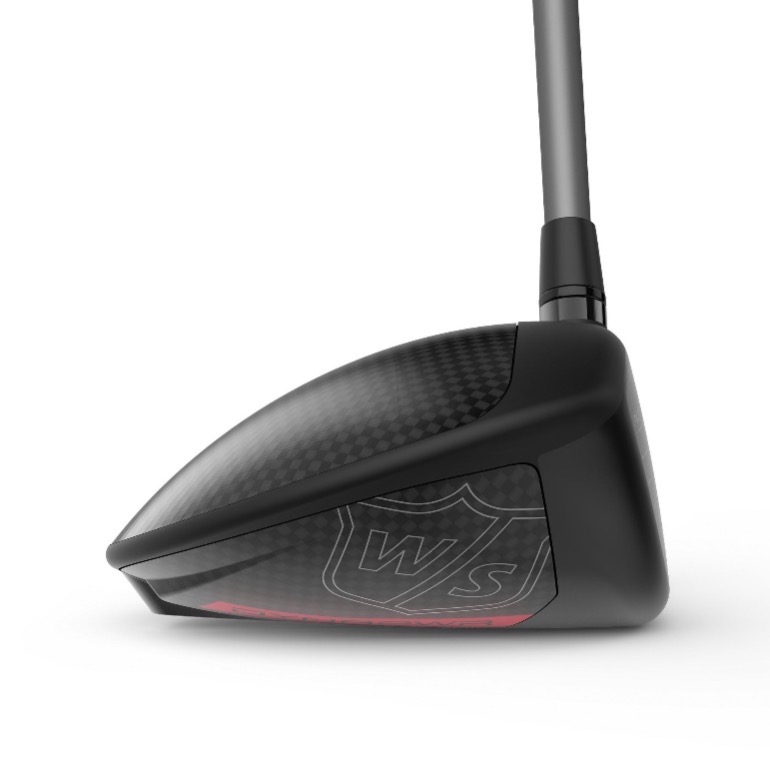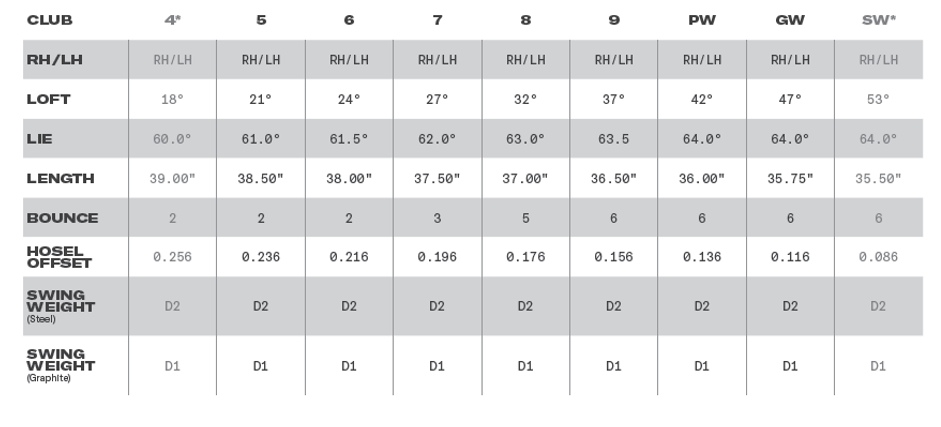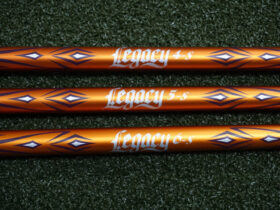Wilson Staff Dynapower Line
On June 18, 1960, a 29-year-old Arnold Palmer, riding an impressive wave of five wins in five months, stunned onlookers with a closing round 65 in the US Open at Cherry Hills. Sitting seven strokes behind the leader after the third round, Palmer managed to climb from 15th place to 1st with his famed combination of power, precision, and passion. Included in the list of names he managed to best that day were Ben Hogan, Jack Nicklaus, and Gary Player, a who’s who of what was possibly golf’s most romantic era.
In his bag that day was a set of irons that seemed like they were named just for him: Dynapower. Dynamic. Powerful. Really, what two words could better describe Arnie? In reality, Dynapower irons were introduced four years earlier in 1956, and weren’t named for Palmer at all. Still, no one can deny the seemingly perfect fit they were for him during arguably his most dominant stretch as a professional golfer.
The Dynapower irons incorporated technological advancements that were very advanced for their time. By using a bore-through hosel, Wilson notes that they were “able to redistribute weight directly behind the hitting area for more power.” Sound familiar? It should, because the art of moving weight around is central to the art (and science) of making golf clubs. Today, we see more of that weight built into the perimeter of irons to improve things like launch angle, ball speed, and forgiveness, but the general concept remains the same as it was all those years ago.
Today, Wilson is re-introducing Dynapower with a full line of golf clubs with two unique drivers, fairway woods, hybrids, and irons. According to Wilson Golf President Tim Clark, “Dynapower changed the game of golf seven decades ago and it’s time for Wilson to do it again. These powerful irons and adjustable drivers are built with our legendary history in mind as we continue to innovate and deliver top-of-the-line products that raise the confidence of golfers at all skill levels. Our technology is second-to-none and we’re extremely proud of this new line of Dynapower products.”
Dynapower Carbon and Dynapower Titanium Drivers

With two unique drivers, Dynapower Carbon and Dynapower Titanium, Wilson is attempting to supply a wide range of fitting options for consumers. Dynapower Carbon can be thought of as the lower spin, neutral bias, and workable driver, while the Titanium model offers slight draw bias and higher launch and MOI (forgiveness) due to a 16g rear weight.

While it’s not Wilson’s first dive into utilizing carbon construction, the company is incredibly proud of the $499 Dynapower Carbon driver, and it does seem to have a bit more of a premium aura surrounding it compared to recent models. Utilizing lightweight carbon panels on both the crown and sole enabled Wilson to move weight in a manner that produced, “a lower spinning, mid-launch ball flight that allows maximum workability and maximum distance.” This is certainly the better player’s driver of the two 2023 options, though we won’t be able to comment on real-world performance until we have it in hand. Still, there is at least some evidence it’s performing to high standards, as it has already been seen in action on the PGA Tour and will be in the bag of the newest Wilson Advisory Staff member, Kevin Kisner. While Wilson will likely never find themselves at the top of any Tour’s weekly driver-count, Tour validation is Tour validation, and it does mean something.

While the tech story and performance testimonials are somewhat compelling, it’s hard to absolutely fall in love with the look of the Dynapower Carbon. At first glance, the distinctive look of a carbon crown is immediately visible, transitioning into what looks like a cup-face, but is actually a standard, welded face. The look from address is a bit of a dichotomy. While the visible carbon crown suggests modernity, it still manages to look dated to an extent. The sole seems busy, with the weaved-carbon panel, the DYNAPOWR name, and both the Wilson script logo and Wilson Staff shield. Though there is historical precedence for including both logos on a Dynapower golf club, it would probably look best with just a little less going on.

The Dynapower Titanium, priced at $429, may seem like the less advanced driver based on price and construction material, but it’s been designed with a completely different type of player in mind. More in line with what some may call a game-improvement driver, the Titanium offers some more forgiveness than the Carbon, along with higher launch and spin, and a slight draw bias. Wilson did quantify this, sharing that internal testing showed approximately ½ degree higher launch angle, 200rpm more spin, and 10 yards more leftwards dispersion when compared loft-for-loft with the Carbon.

The Titanium’s full titanium construction results in a more uniform looking crown that looks very clean from the address position. Missing from the sole is the carbon weave rear-toe section, though it has the same badging and busyness.

Both drivers possess a new, six-position adjustable hosel that allows for loft adjustments ranging from -1 to +2 degrees. In addition, these adjustments will impact face angle, resulting in up to a 750rpm difference in left/right spin. Fitting carts will be vital for consumers to find their ideal starting loft, as lofting up or down too much could seriously impact directional dispersion.

The Carbon and Titanium also share similar face technology that Wilson calls PKR2 dynamic face thickness. This is a common design concept in drivers and is designed to produce consistent ball speeds across the face.

Both the Dyanpower Carbon and Titanium drivers will be offered with five stock shaft options and gray Lamkin Crossline 360 grips. In addition, fitting carts will have 5g, 9g, 12g, 16g and 20g weights available to dial in both swing weight and launch conditions.
Available lofts are:
- Carbon ($499): 9, 10.5, and 12-degree heads
- Titanium ($429): 9, 10.5, and 13-degree heads
Wilson points out that they will have the potential to offer thousands of fitting combinations, so it is well worth your time to seek out a fitter.
In addition to the two drivers, both Dynapower fairway woods and hybrids will be part of the 2023 line.
Dynapower Fairway Woods Highlights:
- Dynapower Fairway Woods feature rear weighting and variable face thickness to deliver the fastest ball speeds over the entire face for higher, soaring ball flight.
- High MOI head design: Dynapower fairway woods features a 12-gram rear weight to produce a stable, high MOI club head that delivers forgiving, higher launch angles.
- Advance, tour-inspired head shape: Tour player testing resulted in a flatter profile for a clean setup behind the ball.
- 3 wood (15), 5 wood (18), and 7 wood (21)
- Project X HZRDUS Smoke Red RDX (A, R, S)
- Pricing: Dynapower Fairway Woods: $249.99

Dynapower Hybrids Highlights:
- Dynapower Hybrids showcase a low center of gravity (CG) and variable face thickness to deliver easy-to-launch ball flight, precise distance and tour-player preferred, flatter profile for a confident setup.
- High MOI head design: Internal weighting positions the CG low and back to produce a high MOI clubhead for more forgiveness and higher launch angles.
- Advance, tour-inspired head shape: Tour player testing resulted in a flatter profile for a clean setup behind the ball.
- 3 (19), 4 (22), 5 (25), and 6 (28)
- Project X HZRDUS Smoke Red RDX (A, R, S)
- Pricing: Dynapower Hybrids: $219.99

Dynapower Irons

So, we finally make our way back to the clubs that started it all, the Dynapower irons. Truth be told, the 2023 Dynapower irons don’t bear much resemblance to their ancestors. From a company that still produces some of the most attractive blades and cavity backs on the market, it’s hard not to be disappointed in some ways. Never having seen the 2023 version, we admit to some early romanticized daydreaming of yet another irresistible Wilson forging. While the historical concepts of power and performance are there, it’s understandable that we may have hoped for something that made our jaws drop. Still, Wilson poured a great deal of effort into modernizing this classic, and here we are.

According to Wilson, their Dynapower irons are “engineered for 10+ handicaps but designed to appeal aesthetically to single digit handicaps looking for a little more distance and mishit management in their game”. That’s a mouthful, but it’s easy to read between the lines. While the company hopes some lower handicap players choose them, 2023’s Dynapower irons are more a traditional game-improvement design. The red and black cavity badging that initially was a bit of a letdown grew on us over time. It’s not a pristine forged cavity, but it’s not as busy as many competitors in the game-improvement/distance class. One part of the cavity design worth discussing is the red “DYNAPWR” logo that is seen on every club in the line. Wilson is using the line’s historical name in its marketing, while concurrently using their modern take on the name on the clubs. We understand the concept of modernized branding, but it seems like this detracts from the new line more than it enhances it.
Wilson’s messaging on the look is a bit contradictory, but the visuals and specifications do clear things up quickly. Though they describe the irons as having a “player-preferred head” with a “pleasing top line and optimal offset”, the reality is the Dynapower set appears to possess a bit thicker topline and generous offset. Of course, that’s a completely relative statement; they are slightly less offset than Callaway’s Rogue ST Max, but certainly more so than Srixon’s ZX5. Don’t mistake this discussion as meaning offset is a bad thing. It certainly has its place in modern iron design. Still, terms like “player-preferred” tend to point consumers in a direction that maybe the 2023 Dynapower irons aren’t quite going to match.

What we do love is Wilson’s decision to take what were, in the late 1950’s, some of the industry’s most technologically advanced concepts and reimagine them for modern use. What was revolutionary seventy years ago wouldn’t quite cut it in a 21st century game-improvement iron, but the building blocks were there.

Wilson’s research suggests 85% of all 10+ handicap’s iron shots are hit towards the center-toe portion of the club face. Knowing that, they decided to focus their design efforts on improving results there. Unlike the 1950’s approach to moving weight outwards towards the hitting area, the 2023 Dynapower irons drive weight low and towards the toe to increase launch angle, MOI, and stability on off-center shots, which should produce better accuracy. This is not an uncommon concept in game-improvement iron design of course, but it does illustrate how the same basic concept can span decades and produce different, but still-desirable results.
To produce consistent ball speeds across the face, Wilson is relying on their thinnest face to date, along with redesigned Power Holes 3.0. Ignoring what could be the worst name for any technology ever, these two features combined to produce over 2mph more ball speed than comparable irons. Wilson employed what they call Dynapower AI to analyze thousands of combinations of variable face thickness and power hole locations to deliver the most optimal ball speeds across the face of the iron, with a focus towards the center-toe area.

Consumers should expect this to be a very fast iron that launches the ball quite high. As is often the case, spin rates will likely be on the lower end, with ball speed and launch angle playing a big role in attaining optimal peak height.
Dynapower irons utilize the same Lamkin Crossline 360 grip as the rest of the line and are offered with two stock shaft choices, KBS Max Ultralite in steel ($799) and UST Mamiya Recoil Dart 60 in graphite ($899). Custom fitting and shaft options are also available.












The Dynapower Driver started out hot and then cooled off quickly.
I agree that they need a Mid Season release of a "MAX" 9Kish driver.
Tough to move product without it.
They are close I think. It was a good start and the Titanium hit a lot of bases. The problem was that I think the Titanium was seen as inferior with the big Carbon push. Just my subjective opinion.